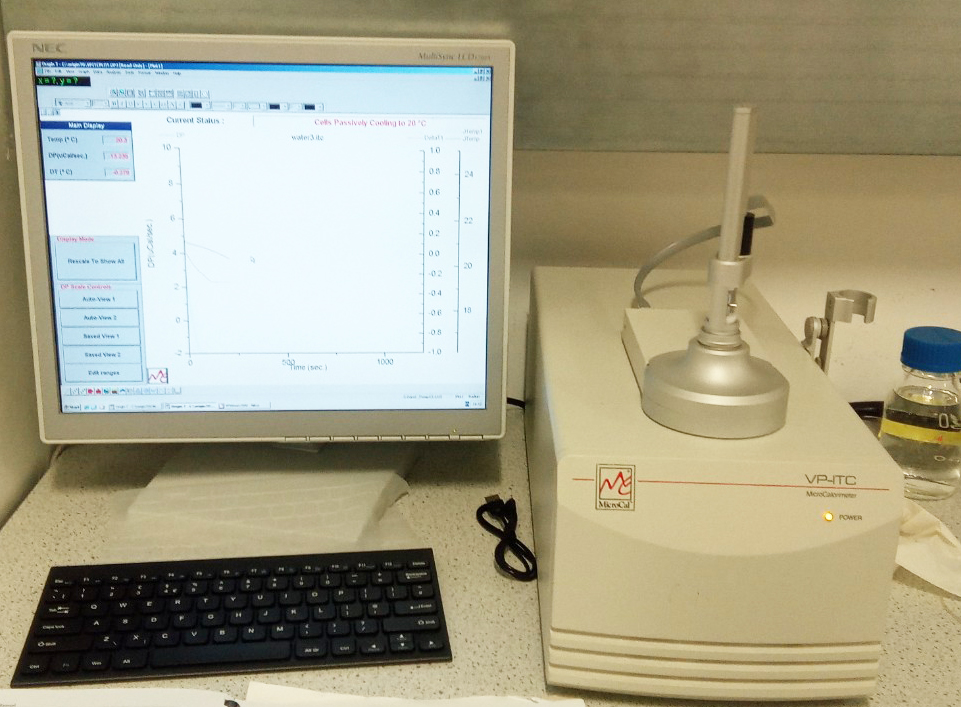|
|
|
Isothermal
Titration Calorimeter
(VP-ITC, Malvern)
 |
Isothermal
titration calorimetry measures
the heat that is released (or
required) when molecules
interact. In a typical ITC
experiment, a single titration
of ligand into a solution of its
interaction partner results in a
series of peaks representing the
heat of each addition. These can
be analysed to give a complete
characterization of binding
thermodynamics, i.e. the binding
affinity, stoichiometry,
enthalpy and entropy.
A wide range of buffer
conditions are suitable. A further
advantage is that molecules do not
need to be labelled or altered, so
the method lends itself to
investigations at native
conditions. However, a relatively
large sample volume is required,
so alternatively Surface Plasmon
Resonance could be used, or, if
one of the binding partners is
fluorescent, anisotropy
measurements could be
performed.
|
Sample Requirements
- Volumes: at least 2.5 ml of sample, 2
times 600 μl of titrant/ligand.
- Concentrations: depends on expected
association constant and heat generated
by the reaction, usually 10-200 μM for
sample, 10-20x greater for ligand for
1:1 binding
- Sample and ligand must be extensively
dialysed into the same batch of buffer
for the experiment. Please get in touch
if this is impossible. ITC is very
sensitive against buffer mismatches.
- Stability at required concentration
and temperature must be tested
beforehand as precipitation will make
results impossible to interpret
Buffer Requirements
- pH ≥ 5 (instrument may be damaged by
acid).
- Avoid Tris buffer.
- Avoid DTT,- avoid TCEP and bME,
although ~1 mM may be acceptable.
- Keep plenty of the dialysis buffer for
diluting, cell priming and control run.
Concentrations
- It is important to optimize the
concentration in order to get fittable
data.
- Sample concentration: use estimated
association constant KA and
stoichiometry N and the following rule:
5 ≤ KA·Csample·N ≤ 500, for biological
samples KA·Csample·N = 100 is advisable,
e.g. suppose N=1 and KA is 105 M-1, then
C=5/(1·105 M-1)=5·10-5 M= 500 μM. In any
case it should be ≥50 μM.
- Expected data can be simulated in
advance using ITC Expert software.
- Ligand: if possible 15 times the
concentration of sample
Temperature Dependence of ΔH
- ΔH is temperature dependent, hence
could be zero at chosen temperature,
ideally ΔH should be 2-10 μCal/s for the
first few injections.
- Temperature and/or concentrations may
have to be changed for better signal
- Concentrations can be 3-5 times lower
if signal-to-noise ratio is acceptable.
Please contact us for detailed protocols and
planning your experiment.
|
|
|
|

